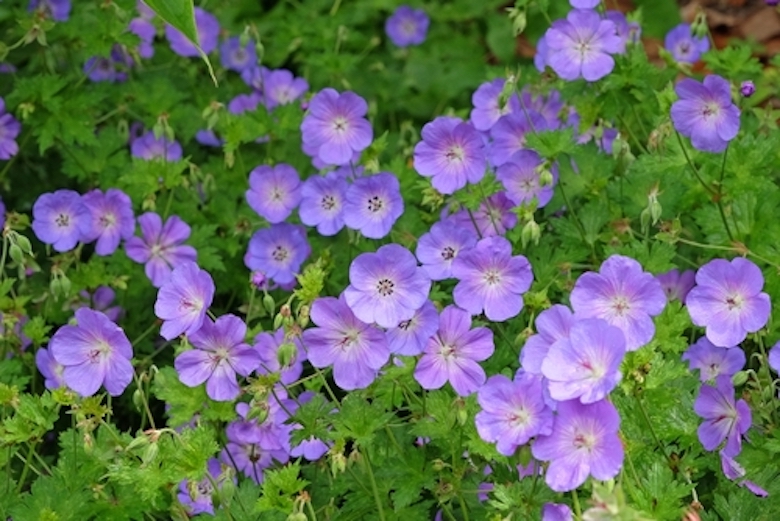Last Updated on November 28, 2025 by the Dobies Horticultural Team
Spring flowering bulbs are nothing if not versatile. They will happily grow in containers, borders, through grass, and under trees. Better yet, they are a vital lifeline for early emerging bees, providing essential nectar when little else is in bloom.
The appearance of the first spring flowers is when many of us breathe a sigh of relief. Whether it’s daffodils, snowdrops or tulips, these splashes of colour are a welcome promise of longer, warmer days to come. Simple to grow and needing little aftercare, your spring bulbs will put on a glorious display – just follow these simple tips.
Getting the basics right: how to plant your bulbs

Image: Shutterstock
Spring bulbs planting depth
As a general rule, plant your bulbs at least twice as deep as their height. You can use a calibrated bulb planter to help you with this. A bulb that is 5cm tall will do best planted at a depth of 10cm. There are some exceptions:
- Tulips: When planting tulip bulbs, dig deep. A depth of about 20cm will help protect them from slugs and encourage flowering year after year. They are best planted late, in November or even into December.
- Early-flowering bulbs: Plant smaller corms and bulbs like Crocus and Iris reticulata about 10cm (4”) deep. Scilla like to be planted a little shallower, at 5-8cm (2-3″) deep.
Planting bulbs in pots and containers
Bulbs are perfect for pots, bringing colour to doorsteps, patios and balconies.
- Provide good drainage: Bulbs don’t grow well in wet soil, so make sure your pots and containers have plenty of drainage holes.
- Try a bulb lasagne: For a full, continuous display in a deep container, try layering your bulbs. Start with the largest, latest-flowering bulbs at the bottom (like tulips), add a layer of compost, and then place the next sized bulbs. Repeat until the smallest, earliest bulbs are near the top, covered with a final layer of compost.
- Use the ‘pot-in-pot’ method: Consider planting your bulbs in ordinary plastic pots that can then be slotted inside your more decorative containers. When they’ve finished flowering, lift out the plastic pots and move them elsewhere to die back, leaving your nicer container ready for summer planting.
Planting spring bulbs in borders and lawns
When you’re planting directly in the ground, aim for a natural look rather than neat, ordered rows.
- Create natural drifts: The best way to achieve a natural look is to gently roll a handful of bulbs over the soil and plant them where they land. This works beautifully for naturalising bulbs like cyclamen, snowdrops, crocus, and daffodils under the shade of trees and shrubs.
- Planting in lawns: If you’re planting in a lawn, remember that to leave the foliage to die down naturally after flowering. This will delay your first few mows of the season, so choose a spot where a patch of longer grass won’t look out of place.
- Mark the spot: To avoid digging up your bulbs by accident or spearing them with a fork later in the year, be sure to mark where they are planted.
Best spring bulbs

Image: Shutterstock
While daffodils and tulips form the main event, these reliable early-flowering bulbs are an essential part of bringing the garden back to life after winter and providing vital nectar for wildlife.
- Crocus: A crucial early food source for wildlife. You’ll sometimes see queen bumblebees delving deep into crocus flowers for their first substantial meal of the year.
- Scilla (Glory of the Snow): A remarkably tough bulb whose flowers create a carpet of vibrant blue in late winter.
- Iris reticulata: Known for their intricate, detailed flowers and intense colours. These compact irises often appear as early as January, providing a splash of purple, yellow or blue against bare earth or snow.
- Winter Aconites & Snowdrops: This classic early pairing brings carpets of cheerful yellow (aconites) and delicate white flowers (snowdrops) to the garden floor. Both establish best when planted ‘in the green’ in spring while in full growth.
Essential bulb aftercare for a repeat display

Image: Shutterstock
Spring bulbs require very little care, but a few small jobs will ensure they return year after year.
- Watering and feeding: Any bulbs grown in containers should be watered when they are in active growth. They also benefit from a high-potassium fertiliser (like a tomato feed) applied from when they start flowering until six weeks after.
- Let the foliage die back: This is the most important rule. Allow the foliage to die down naturally after flowering, as this is when the bulb is storing energy for next year’s display.
- Disguise dying leaves: In borders, the leaves of bulbs like Iris reticulata can be easily masked by companion planting them with hardy perennials. The emerging leaves of hardy geraniums, for example, are perfect for mingling with and camouflaging the browning bulb foliage.
Late autumn – between September and November – is the time to plant for a beautiful display to lift your spirits in late winter and early spring, providing colour and vital nectar for wildlife when there is so little else in bloom.
Lead image: Shutterstock

